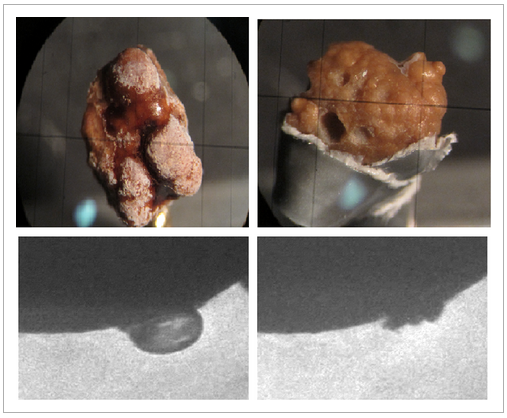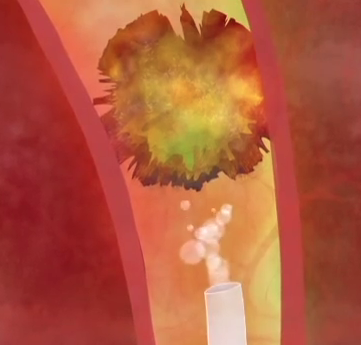
Editorial: Can we rely on LVI to determine the need for adjuvant chemotherapy in organ-confined bladder cancer?
The authors of this paper [1] are to be congratulated on exploring lymphovascular invasion (LVI) as a possible singular prognostic marker for time to recurrence and overall survival (OS) in a post hoc analysis of a prospective randomized study that originally explored adjuvant methotrexate, vinblastine, doxorubicin and cisplatin chemotherapy after radical cystectomy based on p53 status. This study is the largest prospective study to date looking at the outcome of LVI in organ-confined urothelial…

Article of the Month: Targeted microbubbles in the treatment of kidney stones
1 Comment
/
Every Week the Editor-in-Chief selects the Article of the Week from the current issue of BJUI. The abstract is reproduced below and you can click on the button to read the full article, which is freely available to all readers for at least 30 days from the time of this post.
Finally, the third post under the Article of the Week heading on the homepage will consist of additional material or media. This week we feature a video from Dr. Krishna Ramaswamy, discussing his paper.
Targeted…

Video: Targeted microbubbles – A novel application for treatment of kidney stones
Targeted microbubbles: A novel application for treatment of kidney stones
Krishna Ramaswamy, Vanessa Marx*, Daniel Laser†, Thomas Kenny‡, Thomas Chi, Michael Bailey§, Mathew D. Sorensen §, Robert H. Grubbs* and Marshall L. Stoller
Department of Urology, University of California, San Francisco, *Department of Chemistry and Chemical Engineering, California Institute of Technology, Pasadena, †Wave 80 Biosciences, San Francisco, ‡Department of Mechanical Engineering,…

Article of the Week: Quantifying ATP release from isolated bladder urothelial cells
Every Week the Editor-in-Chief selects the Article of the Week from the current issue of BJUI. The abstract is reproduced below and you can click on the button to read the full article, which is freely available to all readers for at least 30 days from the time of this post.
In addition to the article itself, there is an accompanying editorial written by a prominent member of the urological community. This blog is intended to provoke comment and discussion and we invite you to use the comment…

Editorial: Mechanisms of ATP release – future therapeutic targets?
When Ferguson et al. [1] demonstrated ATP release from the rabbit bladder and concluded: ‘… ATP is released from the urothelium as a sensory mediator … ’, they opened a new field of research with focus on urothelial signaling mechanisms and afferent nerve functions in bladder control. Other investigators have shown, in several animal models, that ATP is released from urothelial cells during distention of the bladder and that the amount released is proportional to the extent of distention…

Article of the Week: Am I normal? A systematic review for penis length and circumference
Every Week the Editor-in-Chief selects the Article of the Week from the current issue of BJUI. The abstract is reproduced below and you can click on the button to read the full article, which is freely available to all readers for at least 30 days from the time of this post.
In addition to the article itself, there is an accompanying editorial written by a prominent member of the urological community. This blog is intended to provoke comment and discussion and we invite you to use the comment…

Editorial: When normal is not enough
This is a useful reference on penile size, flaccid, stretched and erect [1]. It is interesting to note that the stretch length is quite a useful surrogate for erect length. Measuring stretch lengths obviously has inter-observer bias. This paper describes the standard technique for measuring from the pubic bone along the dorsum of the phallus to the tip, which is usually the external urinary meatus. Some men could well take solace in knowing that their penile length is within the normal range;…

Article of the Week: Renal Function is the same regardless of clamp technique 6 months after RAPN
Every Week the Editor-in-Chief selects the Article of the Week from the current issue of BJUI. The abstract is reproduced below and you can click on the button to read the full article, which is freely available to all readers for at least 30 days from the time of this post.
In addition to the article itself, there is an accompanying editorial written by a prominent member of the urological community. This blog is intended to provoke comment and discussion and we invite you to use the comment…

Editorial: To clamp or not to clamp in robotic partial nephrectomy?
The article by Komninos et al. [1], in this issue of the BJUI has looked into the importance of warm ischaemia techniques in robot-assisted partial nephrectomy (RAPN) on the deterioration in short- and longer-term renal function. A case series of 162 procedures undertaken by a single surgeon over a 7-year period was analysed. Within this cohort, 114 patients underwent main artery clamping, whilst 23 and 25 patients underwent off-clamp and selective artery clamping methods, respectively.
Segmental…

Video: 6 months after RAPN – Renal Function is the same regardless of clamp technique
Renal Function is the same regardless of clamp technique 6 months after Robot-assisted Partial Nephrectomy: Analysis of Off-Clamp, Selective Arterial Clamp and Main Artery Clamp with minimum of 1 year follow-up.
Christos Komninos*‡, Tae Young Shin†, Patrick Tuliao*, Woong Kyu Han*, Byung Ha Chung*, Young Deuk Choi* and Koon Ho Rha*
*Department of Urology and Urological Science Institute, Yonsei University College of Medicine, Seoul, †Department of Urology, Chuncheon Sacred…
